


Analysis: 'Whitewashing' of the traditional mahjong game causes furore online
share on
Dallas-based company The Mahjong Line came under fire earlier this week for cultural appropriation when it refreshed the centuries-old Chinese game of mahjong to engage with the new generation of American mahjong players. Mahjong is deeply rooted in Chinese tradition, dating back to the days of the Qing dynasty, and its iconic tiles feature the standard suits of Chinese characters, flowers, bamboos, stones, as well as the honour suit.
The Mahjong Line sold limited-edition versions of the game with names such as "The Minimal Line", "The Botanical Line", and "The Cheeky Line" for approximately US$300 to US$400. The Cheeky Line, for example, replaced the traditional suits with lightning bolts, bubbles, and bags of flour. Meanwhile, "The Botanical Line" featured leaves, bamboo, and dragon flies. The Chinese characters representing the directions north, south, east, and west were also replaced with the letters N, S, E, and W.
In addition to the design change, netizens also took issue with the company's origin story and the website's copywriting. While the website has since been edited, screenshots of the previous web copy have been circulating online and its "About Us" section previously wrote: “On a quest to purchase her first mahjong set, [one of the founders’] Kate discovered that the artwork of the traditional tiles, while beautiful, was all the same - and did not reflect the fun that was had when playing with her friends. And nothing came close to mirroring her style and personality.”
“There was so much potential in the words and expressions called out during a game - cracks, bams, flowers, and winds - and she decided the venerable game needed a respectful refresh,” the website said. It added that Kate, together with two other co-founders Annie and Bianca, “hatched a plan to bring mahjong to the stylish masses”.
Enraged netizens on Twitter called out The Mahjong Line, which was founded by three Caucasian women, for the "whitewashing" and "gentrification" of mahjong, adding that they have the "shameless audacity" to rebrand the game and charge more than US$300 for a game. Meanwhile, one netizen said the copywriting was problematic because it highlighted "the white rebrand as stylish luxury and the Chinese original as lacking personality". Netizens also found that Dallas-based branding agency O&H Brand Design worked together with The Mahjong Line for the game refresh.
https://twitter.com/jesssicaxie/status/1346274928975249408
https://twitter.com/mikamsu_/status/1347118205987389440
https://twitter.com/SPRlNGBAE/status/1346238399544483841
https://twitter.com/joeyng/status/1346358962996748288
The Mahjong Line has since apologised on Instagram, explaining that while its intent is to inspire and engage with a new generation of American mahjong players, it recognises its failure to pay proper homage to the game's Chinese heritage. It added that using words such as "refresh" were hurtful to many and it is deeply sorry. The company was launched in November last year and The Mahjong Line said its mission is to combine its passion for art and colour alongside the fun of the game, while seeking to appeal to novices and experienced players alike.
"It's imperative our followers know we never set out to ignore or misrepresent the origins of this game and know there are more conversations to be had and steps to take as we learn and grow. We are always open to constructive criticism and are continuing to conduct conversations with those who can provide further insight to the game's traditions and roots in both Chinese and American cultures," it added. The Mahjong Line has also replaced its "About Us" section with the apology, disabled comments for its Instagram, and deleted its Facebook page.
Meanwhile, the team at O&H also issued an apology on its website, saying that it is "deeply and sincerely sorry for the role [it] played in the creation of The Mahjong Line tiles and brand". "There was a clear lack of awareness, cultural appreciation and respect on our part during our design process. We own that and apologise for it. We must do better, and we are taking steps to educate ourselves so that we do not make these types of mistakes again," the agency said.
O&H has also begun the process of researching ways to learn from the Asian-American community in the city and region to better understand, respect and honour [the game] moving forward, and has terminated its relationship with The Mahjong Line.
Why The Mahjong Line failed while others succeeded
Limited-edition mahjong sets are not new in the market, with luxury brands such as Hermes, Tiffany & Co, and Louis Vuitton, as well as Singapore Airlines (SIA) pushing out their own customised sets. Unlike The Mahjong Line, their sets were met with much fanfare from the public, with many being snapped up quickly.
Jacqueline Thng, Prophet’s partner, Asia leadership and ASEAN lead, said Tiffany & Co and SIA for example, refreshed their mahjong sets by adding their own branded touches. Tiffany had its distinctive tael brand colour and elegant detailing, while SIA paid homage with its peranakan and batik motifs, even going further to replace some of the tiles with their logo. According to her, The Mahjong Line could have easily taken a similar approach to inject the founders’ personalities into the sets without distorting or reinventing the game.
She explained that the beauty of playing mahjong is the strategy and the opportunity to learn some new Chinese characters and symbols (for the non-Chinese players), as well as the clacking of the tiles that resembles chattering of sparrows, hence the name.
“Like chess, this is not a game that you can rebrand or reinvent without coming across as silly. Chinese chess or xiaqi, for example, adapted the game in line with how the Chinese will organise its warring troops and changed some of the rules, all without spoiling the original strategic joy of chess. That is respecting the game while localising your own culture. The Mahjong Line could have easily taken the same approach,” Thng said.
While she personally does not find The Mahjong Line’s redesign disrespectful, Thng said the company could have retained the bright happy colours, adapted the seasons and designed the style without “dissecting and completely discarding the beauty of” Chinese culture or the mahjong game.
Similarly, Labbrand's MD of Singapore, Jessalynn Chen, said other brands succeeded in pushing out their own customised mahjong sets because they were "serious and careful in their consideration to maintain the integrity of the material". She explained that the sterling silver dices with Tiffany Blue enamelled dots, the aircraft seats and engines on the SIA’s bamboo and circle suit tiles, as well as Louis Vuitton’s all-rage set for Taiwan which used its national bird, blue magpie, for the tile design was all a fine balance tackled through the design front. This was done by taking inspiration from familiar brand elements and paying homage to its tradition, not an overhaul approach.
"Because mahjong is an age-old culture, if the brand was lacking the cultural understanding, it could have done some research and interviews with a wide range of targets for a consumer-centric and diverse view. This would have delivered better foundation for the rebrand exercise. It wouldn’t have been a time consuming exercise, but one that could have avoided them the PR nightmare," Chen explained.
In the case of The Mahjong Line, Chen described it to be "an unfortunate case of cultural appropriation and very little cultural appreciation". That said, she pointed out that cultural appropriation is a complicated topic with many brands and companies having fallen trap to it. Chen added:
One solution requires an end-to-end change in the brand’s or company’s culture and behaviour, so that the brand or company is empowered with cultural competency in order to be sensitive towards cultural diversity.
With a more informed group of consumers today, brands find themselves having to walk the fine line between being creative and not coming across as appropriating another culture.
According to Tania Tai, MD of DIA Brands Malaysia, respect and genuine appreciation were the two missing elements that led to ire of netizens. Had the founders taken a more humble approach by acknowledging the century-rich history of the game, and paid homage to artistry and the design intent of the mahjong tiles, she believes the outcome would have been very different.
"Culture appropriation, when done right, can potentially become a wonderful source of creative differentiation for brand owners. Think of it as design journey of shared vision and values to bring about the magic of a blended style that amplifies the wonder of authenticity," she added.
Make or break with copywriting
Copywriting is no doubt an important aspect of a company's branding. Safe to say, it can either make or break a brand and in The Mahjong Line's case, the company copped flak for what was deemed culturally insensitive copywriting. According to Chen, copywriting delivers the brand’s voice, the way a brand wants to be known, and it gives consumers a view into the brand.
"It is sometimes an under-valued exercise, but very important in creating value-driven content to create the right impression of the brand. Keep the use of words clear and simple, and with purpose," she said. To further emphasise her point, Chen quoted Albert Einstein saying: “If you can’t explain it simply, you don’t understand it well enough."
The latest saga with The Mahjong Line also brings about the need for brands to build long-term relationships with consumers, especially in the age of social media where individuals are able to see and comment on issues faster, Chen said. As a result, consumers are able to call out what is bad and others are also quick to notice.
"Social media puts brand behaviour on an amplified spotlight, so brands should always invest in a long-term relationships with their consumers to listen and understand them; led with C-level actions to also ensure diverse internal talent and transparency to cultivate true, respectful exchange of cultures," Chen explained.
Meanwhile, although Prophet's Thng believes the upheaval from netizens stem mainly from the website's copywriting rather than "the silly designs" of the mahjong sets, as the company's comments came across as disrespectful.
"When one tries to innovate, improve any product, one should seek to understand the origin, stay respectful and evolve, add your own style - copywriting or design - so that you merely project your personality or tone of voice, and not try to put down someone else or, in this case, an entire culture," she explained.
Using Darlie toothpaste as an example, Thng said when Colgate acquired the Chinese toothpaste originally named Darkie with a black face as its logo, the company understood the racism issues behind it. As such, it made a slight name tweak from Darkie to Darlie, and updated the design from a black face to a generic person with a shadow solve the racism issues it could have brought about, while retaining the original charm of the product the Chinese love, Thng said.
DIA Brands' Tai also weighed in on this aspect, saying that marketers need to consider the perspectives and perceptions of different stakeholders when crafting media statements and releases. Her advice would be to map out all the best and worst scenarios for each stakeholder segment before issuing any statement, so that companies become more prepared and avert any potential media maelstrom.
share on
Free newsletter
Get the daily lowdown on Asia's top marketing stories.
We break down the big and messy topics of the day so you're updated on the most important developments in Asia's marketing development – for free.
subscribe now open in new window
